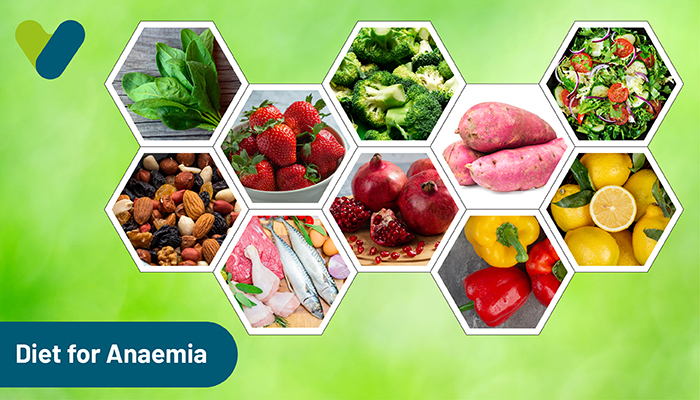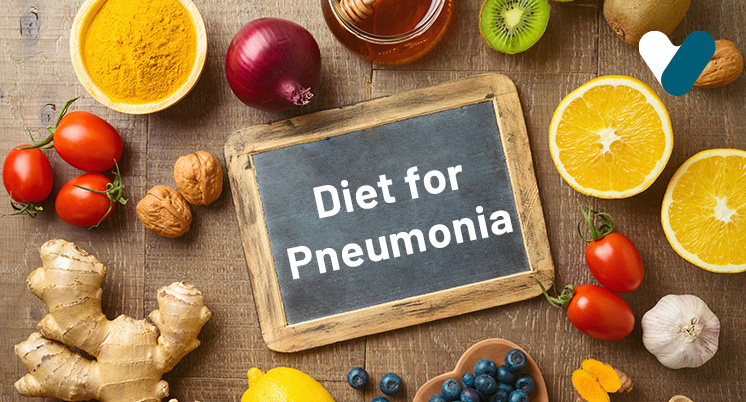Feeling tired? Not feeling like doing any daily chores? This is one of the distinguishing features of anaemia. But what is anaemia? It is a blood condition in which your red blood cell (RBC) and haemoglobin counts drop below the normal range, resulting in less oxygenated blood reaching your organs and tissues. Now, there can be various reasons for and types of anaemia, but iron-deficiency anaemia is the most common. An insufficiency of folic acid and vitamin B12 may also impair your body's ability to produce red blood cells. Pernicious anaemia can develop if your body is unable to properly process vitamin B12. If you have anaemia, you should follow a diet packed with iron, vitamin B, and vitamin C. Consult your doctor to determine the root cause of your anaemia and to know which supplements you should take. Also, there can be situations when anaemia is precipitated by a chronic disease and the symptoms of anaemia may be hidden, making it difficult to detect. There may or may not be symptoms of anaemia, depending on the cause. If there are any, they will be as follows:
- Weakness
- Heartbeat irregularities
- Feeling dizzy or lightheaded
- Cold hands and feet are
- Pale or yellowish-looking skin
- Breathing difficulty
- Headaches
- Chest pain
Foods to help with anaemia
The majority of anaemic patients are recommended to consume 150 to 200 milligrams of iron daily. To prevent or reduce anaemia, consume the following foods:Vegetables and fruits
- Spinach
- Curly kale
- Salad greens
- Chard (Swiss chard)
- Peppers, both red and yellow
- Watercress
- Sweet potatoes
- Dandelion greens
- Strawberries
- Oranges
- Lemon
- Pomegranates
- Green beets
- Key lime
- Broccoli
- Cashews
- Almonds
- Walnuts
- Hemp seeds
- Seeds of sunflower
- Pistachios
- Pumpkin seeds
- Peanuts
- Pine nuts
- Hazelnut
Nuts and seeds are extremely nutritious foods. One serving (ounce) of pistachios contains 6.1% of a person's daily iron requirement.
Fish and meat- Lamb
- Liver
- Shrimps
- Shellfish
- Beef
- Oysters
- Tuna
- Perch
- Salmon
- Venison
- Haddock
- Halibut
- Sardines
Heme iron can be found in meat and fish. Heme proteins are plentiful in lean white meats like chicken. Grilled chicken (three ounces) with sides of sauteed spinach, broccoli, and tomatoes can be a good source of iron for those suffering from anaemia.
Pulses and beans
- Chickpeas (chana)
- Black beans
- Lima beans
- Kidney beans
- Black-eyed beans
- Soybeans
Lentils are considered a rich source of nutrients for anaemic individuals. A half cup of lentils contains approximately 3.3 milligrams of iron, which makes up approximately 20% of your daily requirement. Beans and pulses high in iron are suitable for both meat eaters and vegetarians.
Grains
Cereals, iron-rich pasta, and grains are excellent sources of iron; however, there are natural alternatives as well that are all packed with iron and help raise haemoglobin levels in the blood. These alternatives include the following foods:
- Oats
- Whole wheat
- Quinoa
- Kamut
- Teff
Eggs: Eggs are well known for their protein content, but they also have a high iron content. Breakfast can be served with eggs, lightly roasted tomatoes, whole-grain toast, and quinoa for a nutritious start to the day.
Foods that are fortified: Iron-fortified foods come in a wide range of varieties. Even if you are a vegetarian or cannot tolerate other sources of iron, you can include these in your diet.
- Fortified cereals
- White rice fortified
- Pasta with added nutrients
- Fortified orange juice
- Bread and other foods made with fortified white flour
- Foods prepared with fortified cornmeal
Foods rich in vitamin C
Dietary iron comes in two forms: heme and non-heme. Heme iron, which is obtained from animal products like meat and seafood, is absorbed in a much better way by our bodies than non-heme iron. Non-heme iron is derived from plants, including leafy green vegetables and legumes, and is less well absorbed than heme iron. The key to increasing iron absorption from non-heme sources is to combine it with vitamin C foods, which increase the availability of iron in our bodies to use.
- Broccoli
- Citrus fruits (lemons, grapefruit, and oranges)
- Strawberries, blueberries, and raspberries
- Watermelon
- Brussels sprouts
- Cauliflower
- Bell peppers
- Cantaloupe
- Pineapple
- Potatoes (white and sweet)
- Winter squash
Anaemia foods to avoid
Some foods inhibit iron absorption. As a result, eating all the iron-rich food may become redundant if combined with the following foods:
- Foods containing tannins, such as corn, grapes, and sorghum
- Coffee and tea
- Raw milk and certain dairy products
- Phytates or phytic acid-containing foods, such as brown rice and whole-grain wheat products
- Oxalic acid-containing foods include peanuts, parsley, and chocolate
How can you increase your iron intake through diet
Here are some ways in which you can increase your iron intake:
- Foods containing tannins, such as corn, grapes, and sorghum
- Coffee and tea
- Raw milk and certain dairy products
- Phytates or phytic acid-containing foods, such as brown rice and whole-grain wheat products
How can you increase your iron intake through diet
Here are some ways in which you can increase your iron intake:
- Consume iron-rich foods.
- Include foods in your meals that will aid in the absorption of iron.
- Cook food in a cast-iron skillet.
- Cook food for shorter lengths of time.
- Avoid drinking coffee or tea with meals.
- Take supplements containing ferrous salts.


